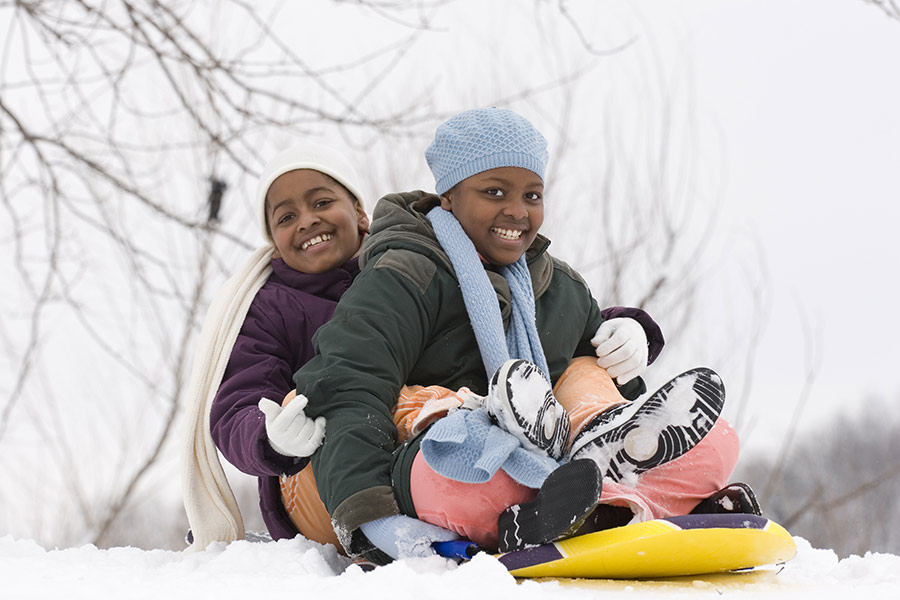Focus on Kindness When Nerves are Frayed (by the Polar Vortex or other hassles of day to day life!)

Tips for Teachers
In temperate climates, where cold weather lingers for more than a month or two, often crabbiness, irritability, and a general sense of ennui settles in by the time February rolls around. The winter holidays are long over, the newness of snow is gone, and the bone-chilling cold outdoors as well as flu germs indoors begin to have a less than inspiring effect on young children and their teachers as well.
Often teachers observe more teasing, less cooperation, and a general feeling of unease in classrooms around this time of year. Some of it emerges from the children themselves, tired of parents and teachers who keep them indoors because of the cold weather, and some of it is the natural result of the intense daily effort it can take to master the elements and get the daily tasks of living accomplished. In the Midwest this winter, there isn’t a soul around who isn’t getting weary of shoveling snow, as much as young children enjoy doing so!
When such dynamics emerge in classrooms, it can be quite helpful for teachers to choose to focus on something very different instead... how about developing a Kindness curriculum? A program I worked at years ago did just that around this time of year, to great results. Instead of concentrating on how to come up with responses to unkind behavior, the teachers decided to focus their energies on supporting kind behavior, observing the children for small kindnesses they exhibited throughout the day. They created a kindness tree out of construction paper stuffed with newspaper, and post it notes became the leaves. Each time a child was observed demonstrating kindness, the teacher wrote it down and posted it as a leaf on the tree.
It didn’t take long for parents and children to start checking the tree daily to see whether they had had a leaf posted! Instead of small cruelties, the children began to look for ways to be helpful toward one another in the classroom. There was increased cooperation regarding use of materials, clean up time, and decision making regarding group play experiences.
Parents inquired as to whether they could post kindness notes describing kindnesses observed at home, and in general, the children’s enthusiasm for cooperation increased significantly. Children like to be noticed and acknowledged, so to be sure, initially the increased kindness related to the reinforcement of seeing their leaves on the tree. It did not take long, however, for these patterns to become incorporated into daily classroom life, turning the tide on the nastiness and irritability that had seemed so prevalent before.
Valentine’s Day is a commercial holiday and generally I advise programs to ignore it. There’s not much developmentally appropriate about purchasing canned valentines and collecting candy, to be honest. However, blending a focus on kindness with a focus on friendship and caring can be a lovely way to avoid a commercial focus on Valentine’s Day while acknowledging the wish to express one’s positive connections with others at home and at school. These themes lend themselves to a variety of activities that can be engaged in at school, and can be extended to an exploration of animals as well... do animals have friends? What does that look like? Do squirrels share their nuts in wintertime? Encouraging questions and thoughts from the children in regard to these broad subjects will bring up many avenues of exploration and keep a lively curriculum topic going on for some time.
Tips for Parents
Often parents in temperate climates are experiencing the same frustrations as teachers this time of year. If an extended vacation on a tropical island is not in the offing, parents would do well to consider a focus on kindness at home as well, and catch their children being “good,” to highlight their acts of kindness and cooperation.
Talking to children about how families work well when they work cooperatively together and providing them with ideas about what they can do to help the family get along well, as well as making suggestions of what you as parents can do, can stimulate discussion and activity plans for improving family cohesiveness.
Go to the library and take out some wonderful new children’s books about winters indoors and out, have a story reading session in a different room, with some soft quilts on the floor and maybe some hot chocolate or a favorite drink or delicious fruit salad (perhaps prepared together ahead of time) nearby to eat before or after the stories.
The concept of creating a kindness tree can work well at home as well as at school (see above). Children love to see words written about them, and reading to them about their acts of kindness towards one another reinforces such positive behaviors.
Think about winter activities that you enjoyed as a child and plan some of those, indoors and outdoors. And look for opportunities to appreciate your children’s positive, caring behaviors!
Questions or comments? call Nancy Bruski at (847) 475-1828 or post them on our contact form.
